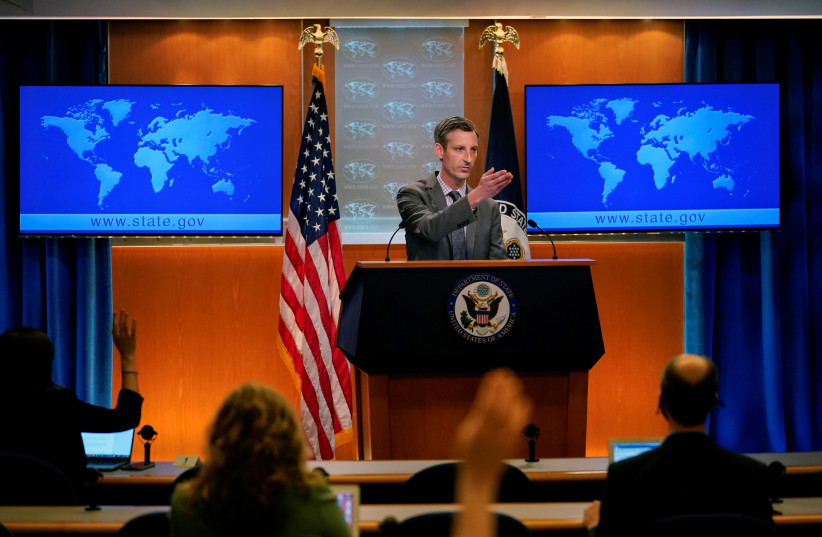Many years ago, when I was in high school, I went to a basketball summer camp. I was never particularly good at basketball – I wasn’t a good dribbler and had nothing that could be considered a long shot. But standing six feet tall even in high school, the one thing I had going for me was my height.
One day, the coach explained to me what I would have to do. On defense, he said, my job was to stand under the basket and try to grab rebounds. On offense, my job was to stand just outside the lane, a few feet from the basket. We practiced plays of me receiving the ball, doing a one-two dribble while turning around and then tossing a relatively easy layup, bouncing the ball off the backboard and into the basket. That’s what the colloquial phrase “a layup” means: a relatively simple task.
I remember one day practicing the shot about 100 times. By the end of the summer, I knew the move cold; it became second nature.
I thought of that summer after the fiasco Israel got itself into last Friday with the announcement that it was designating six Palestinian NGOs as terrorist organizations. This kind of decision and announcement should have been a walk in the park, a layup, an easy shot. Instead, it turned into a diplomatic and political debacle that screams of amateurism and negligence on the part of the so-called “change government.”
From the beginning, something was off about the story. The announcement on a Friday – that the NGOs had an “unambiguous and direct” connection with the PFLP – was made with no evidence released to back it up, no briefing to the press, no videos, no papers.
Then came State Department Spokesman Ned Price, who said that the US was seeking additional information from Israel.
That red flag set off a storm in Jerusalem, where it remained unclear why the government would take such a controversial move – designating supposed Palestinian charities as terror groups – without first updating the Americans, even if just to stave off criticism. This should have been obvious in Jerusalem as something needed when working with a democratic administration known for being particularly sensitive to the Palestinian issue and human rights.
Once Price spoke, the political floodgates swung open. Ministers and MKs from across the coalition who had been left in the dark – particularly from the ranks of Meretz and Labor – slammed Defense Minister Benny Gantz. Later reports claimed that Prime Minister Naftali Bennett and Foreign Minister Yair Lapid were also caught by surprise.
On Saturday night, Gantz’s office briefed reporters with more details, claiming that they had indeed given a heads-up to the US through regular defense channels. Not so, said Price, who stated on Sunday that after checking into the Israeli claim, the State Department still could not find any record of receiving a warning ahead of the designation.
In the meantime, even as Israel stuck to its claim that it had updated the Americans, Bennett and Lapid decided to dispatch a top Shin Bet (Israel Security Agency) official together with someone from the Foreign Ministry to provide a briefing to the Americans. In addition, Bennett decided to convene the security cabinet to give a platform to frustrated ministers to ask some questions.
The big question is, how did the government blow this layup? How would something so simple become such a mess? All Israel had to do was prepare a press briefing, inform the Americans and maybe the Europeans ahead of time, and just play it out according to known guidelines. Was there no one in government who understood that touching the third rail was going to raise eyebrows? How did no one warn of this?
What adds to the failure was that most of this information was already available. The decision to designate the six NGOs as terror groups was based on information prepared by the Strategic Affairs Ministry several years ago, as well as the diligent work done by Prof. Gerald Steinberg and his staff at NGO Monitor. The information was there. How come the Defense Ministry did not have it ready to disseminate to journalists and diplomats?
It was all too reminiscent of the way the IDF and Defense Ministry handled the bombing of the al-Jalaa tower in Gaza in May. Regular readers of this column know the story by now, but here is a reminder: on May 15, Israel bombed the 12-story building that was home to the bureaus of the Associated Press and Al Jazeera in Gaza City.
While it gave warning to the residents so no one would get hurt, it failed to present any evidence before or after the bombing showing why it had to destroy a Gaza icon that was home to the largest American news wire in the world, the AP.
The condemnations came fast and furious. Secretary of State Antony Blinken and White House Press Secretary Jen Psaki put out statements voicing concern for the protection of journalists. When Israel claimed – the next day – that it had shared “smoking gun” intelligence with the Americans, that claim was dismissed by Blinken, who said he had not seen any information on it. Only on Tuesday – three days after the bombing – did he say that he had finally seen something.
Just this past week, former IDF general Nitzan Alon, who probed the incident on behalf of the military, publicly called the al-Jalaa bombing an “own goal” and a “PR terror attack,” whose military benefit was overshadowed by the diplomatic damage it caused Israel.
While it was nice to hear an IDF general reach that conclusion, anyone who understands the dynamic of media, military operations and diplomacy knew this already on the afternoon of May 15.
See the pattern here?
And that is exactly why this is disturbing. It is not rocket science and not overly complicated. You know you are going to bomb a building that houses the AP bureau? Prepare evidence, share it with the Americans, and have it ready to brief the media. Vague statements that the building housed “Hamas military assets” are not going to cut it.
You’re about to announce the terror designation of six Palestinian NGOs known for their charitable work? Here too: prepare the evidence, share it with the Americans, and have it ready to brief the media.
If we all understand this, why doesn’t the government?
There is no one answer. In the case of the al-Jalaa tower, it had to do with the failure of the IDF to understand what it was doing. The IDF Spokesman’s Unit – responsible for media management – is not a party to these operational decisions, and is anyhow run by officers with no media experience. Gantz, who as defense minister had to approve the bombing, should have understood the diplomatic ramifications of the attack as soon as it was presented to him for approval. But he too failed.
A very similar process led to the designation of the NGOs. No one, it seemed, had the foresight to understand that such a move, at a time like this and with an administration like the one in Washington, would lead to a fiasco. Apparently, there is no one sitting around the table when these decisions are made who has the understanding of the modern media landscape and how these events play out.
But there is something else, no less important: Gantz has for some time been operating like a rogue minister in the cabinet. The animosity between him and Bennett and Lapid is no secret; and there are ministers in the government who still suspect that the defense minister is looking for a way to bring down this government in the coming months.
When a defense minister oversees one diplomatic disaster, it can be excused. When he oversees another just five months later, there is a pattern.
Ignorance and politics are causing Israel tremendous damage around the world. Our politicians need to get back to practicing their layup.

